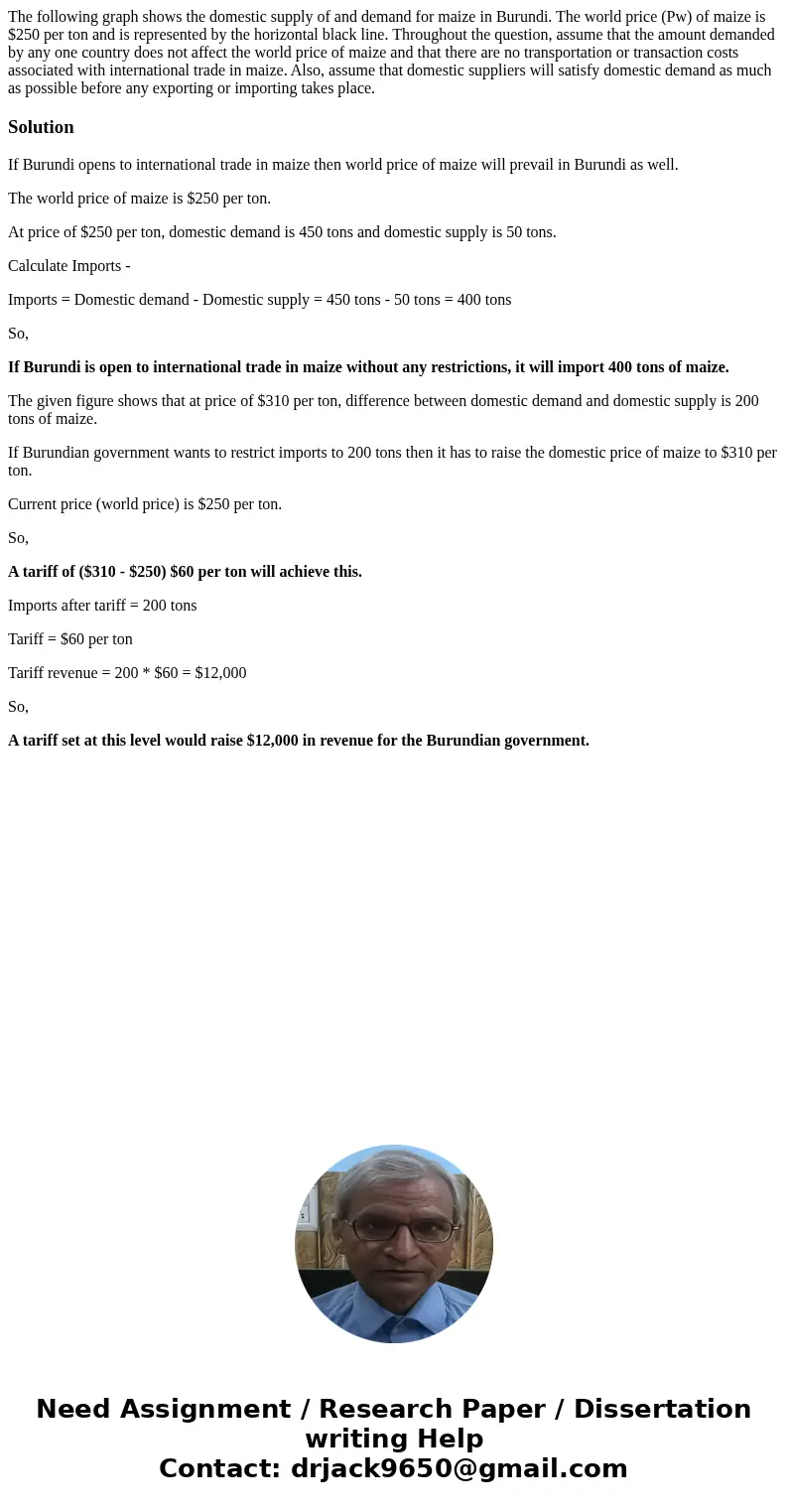The following graph shows the domestic supply of and demand
Solution
If Burundi opens to international trade in maize then world price of maize will prevail in Burundi as well.
The world price of maize is $250 per ton.
At price of $250 per ton, domestic demand is 450 tons and domestic supply is 50 tons.
Calculate Imports -
Imports = Domestic demand - Domestic supply = 450 tons - 50 tons = 400 tons
So,
If Burundi is open to international trade in maize without any restrictions, it will import 400 tons of maize.
The given figure shows that at price of $310 per ton, difference between domestic demand and domestic supply is 200 tons of maize.
If Burundian government wants to restrict imports to 200 tons then it has to raise the domestic price of maize to $310 per ton.
Current price (world price) is $250 per ton.
So,
A tariff of ($310 - $250) $60 per ton will achieve this.
Imports after tariff = 200 tons
Tariff = $60 per ton
Tariff revenue = 200 * $60 = $12,000
So,
A tariff set at this level would raise $12,000 in revenue for the Burundian government.

 Homework Sourse
Homework Sourse